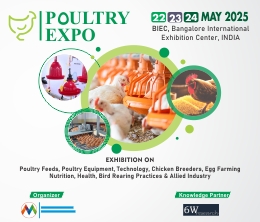Nigeria Zinc Market (2025-2031) | Share, Value, Size, Revenue, Trends, Companies, Growth, Outlook, Industry, Analysis, Forecast
| Product Code: ETC007869 | Publication Date: Sep 2020 | Updated Date: Jan 2025 | Product Type: Report | |
| Publisher: 6Wresearch | No. of Pages: 70 | No. of Figures: 35 | No. of Tables: 5 | |
Nigeria Zinc Market Competition 2023
Nigeria Zinc market currently, in 2023, has witnessed an HHI of 2559, Which has increased slightly as compared to the HHI of 1766 in 2017. The market is moving towards concentrated. Herfindahl index measures the competitiveness of exporting countries. The range lies from 0 to 10000, where a lower index number represents a larger number of players or exporting countries in the market while a large index number means fewer numbers of players or countries exporting in the market.
Nigeria Zinc Market Overview
The zinc market in Nigeria is witnessing steady growth driven by various industries such as construction, automotive, and electronics. With increasing urbanization and infrastructure development, the demand for zinc, a vital component in galvanization, is on the rise. Additionally, zinc oxide and zinc sulfate markets are experiencing growth due to their applications in various sectors including rubber manufacturing, pharmaceuticals, and agriculture. Nigeria agricultural sector, in particular, is a significant consumer of zinc sulfate, used as a micronutrient in fertilizers to enhance crop yields.
Drivers of the market
The Nigeria zinc market is primarily driven by the country`s growing construction and infrastructure sectors. Zinc is a crucial component in the production of galvanized steel, which is extensively used in construction for roofing, fencing, and other structural applications. The government`s focus on infrastructure development, coupled with increasing urbanization and population growth, has propelled the demand for zinc in Nigeria. Additionally, the automotive industry`s expansion further contributes to the demand for zinc for manufacturing car bodies and parts.
Challenges of the market
The Nigeria zinc market faces challenges due to fluctuations in global zinc prices, which can affect the profitability of local producers. Additionally, infrastructure deficiencies and logistical challenges may hinder the transportation of zinc ore from mines to processing plants, impacting production efficiency.
Government Policy of the market
In Nigeria, the zinc market has seen steady growth over the years due to various factors such as industrialization, infrastructure development, and increasing demand from sectors like construction and automotive. The government has implemented policies to encourage local production of zinc and reduce dependency on imports. These policies include tax incentives for zinc producers, support for research and development in zinc-related industries, and measures to improve the efficiency of zinc mining and processing operations. Additionally, the government has been focusing on promoting sustainable practices in the zinc industry to minimize environmental impact and ensure long-term viability.
Key Highlights of the Report:
- Nigeria Zinc Market Outlook
- Market Size of Nigeria Zinc Market, 2024
- Forecast of Nigeria Zinc Market, 2031
- Historical Data and Forecast of Nigeria Zinc Revenues & Volume for the Period 2021-2031
- Nigeria Zinc Market Trend Evolution
- Nigeria Zinc Market Drivers and Challenges
- Nigeria Zinc Price Trends
- Nigeria Zinc Porter's Five Forces
- Nigeria Zinc Industry Life Cycle
- Historical Data and Forecast of Nigeria Zinc Market Revenues & Volume By Applications for the Period 2021-2031
- Historical Data and Forecast of Nigeria Zinc Market Revenues & Volume By Galvanizing? for the Period 2021-2031
- Historical Data and Forecast of Nigeria Zinc Market Revenues & Volume By Die casting for the Period 2021-2031
- Historical Data and Forecast of Nigeria Zinc Market Revenues & Volume By Brass and bronze for the Period 2021-2031
- Historical Data and Forecast of Nigeria Zinc Market Revenues & Volume By Others? for the Period 2021-2031
- Historical Data and Forecast of Nigeria Zinc Market Revenues & Volume By End-users for the Period 2021-2031
- Historical Data and Forecast of Nigeria Zinc Market Revenues & Volume By Construction? for the Period 2021-2031
- Historical Data and Forecast of Nigeria Zinc Market Revenues & Volume By Transportation? for the Period 2021-2031
- Historical Data and Forecast of Nigeria Zinc Market Revenues & Volume By Consumer goods for the Period 2021-2031
- Historical Data and Forecast of Nigeria Zinc Market Revenues & Volume By Others? for the Period 2021-2031
- Nigeria Zinc Import Export Trade Statistics
- Market Opportunity Assessment By Applications
- Market Opportunity Assessment By End-users
- Nigeria Zinc Top Companies Market Share
- Nigeria Zinc Competitive Benchmarking By Technical and Operational Parameters
- Nigeria Zinc Company Profiles
- Nigeria Zinc Key Strategic Recommendations
Frequently Asked Questions About the Market Study (FAQs):
1 Executive Summary |
2 Introduction |
2.1 Key Highlights of the Report |
2.2 Report Description |
2.3 Market Scope & Segmentation |
2.4 Research Methodology |
2.5 Assumptions |
3 Nigeria Zinc Market Overview |
3.1 Nigeria Country Macro Economic Indicators |
3.2 Nigeria Zinc Market Revenues & Volume, 2021 & 2031F |
3.3 Nigeria Zinc Market - Industry Life Cycle |
3.4 Nigeria Zinc Market - Porter's Five Forces |
3.5 Nigeria Zinc Market Revenues & Volume Share, By Applications, 2021 & 2031F |
3.6 Nigeria Zinc Market Revenues & Volume Share, By End-users, 2021 & 2031F |
4 Nigeria Zinc Market Dynamics |
4.1 Impact Analysis |
4.2 Market Drivers |
4.3 Market Restraints |
5 Nigeria Zinc Market Trends |
6 Nigeria Zinc Market, By Types |
6.1 Nigeria Zinc Market, By Applications |
6.1.1 Overview and Analysis |
6.1.2 Nigeria Zinc Market Revenues & Volume, By Applications, 2021-2031F |
6.1.3 Nigeria Zinc Market Revenues & Volume, By Galvanizing , 2021-2031F |
6.1.4 Nigeria Zinc Market Revenues & Volume, By Die casting, 2021-2031F |
6.1.5 Nigeria Zinc Market Revenues & Volume, By Brass and bronze, 2021-2031F |
6.1.6 Nigeria Zinc Market Revenues & Volume, By Others , 2021-2031F |
6.2 Nigeria Zinc Market, By End-users |
6.2.1 Overview and Analysis |
6.2.2 Nigeria Zinc Market Revenues & Volume, By Construction , 2021-2031F |
6.2.3 Nigeria Zinc Market Revenues & Volume, By Transportation , 2021-2031F |
6.2.4 Nigeria Zinc Market Revenues & Volume, By Consumer goods, 2021-2031F |
6.2.5 Nigeria Zinc Market Revenues & Volume, By Others , 2021-2031F |
7 Nigeria Zinc Market Import-Export Trade Statistics |
7.1 Nigeria Zinc Market Export to Major Countries |
7.2 Nigeria Zinc Market Imports from Major Countries |
8 Nigeria Zinc Market Key Performance Indicators |
9 Nigeria Zinc Market - Opportunity Assessment |
9.1 Nigeria Zinc Market Opportunity Assessment, By Applications, 2021 & 2031F |
9.2 Nigeria Zinc Market Opportunity Assessment, By End-users, 2021 & 2031F |
10 Nigeria Zinc Market - Competitive Landscape |
10.1 Nigeria Zinc Market Revenue Share, By Companies, 2024 |
10.2 Nigeria Zinc Market Competitive Benchmarking, By Operating and Technical Parameters |
11 Company Profiles |
12 Recommendations |
13 Disclaimer |
- Single User License$ 1,995
- Department License$ 2,400
- Site License$ 3,120
- Global License$ 3,795
Search
Related Reports
- Germany Genset Rental Market (2025-2031) | Analysis, Share, Industry, Growth, Revenue, Companies, Trends, Outlook, Forecast, Value & Size
- Ethiopia Genset Rental Market (2025-2031) | Trends, Analysis, Companies, Revenue, Size, Forecast, Value, Outlook, Growth, Industry & Share
- Kenya Genset Rental Market (2025-2031) | Growth, Revenue, Value, Share, Trends, Forecast, Outlook, Companies, Industry, Size & Analysis
- South Africa 800kW and Above Gas Engine for Generators Market (2025-2031) | Size, Share, Value, Industry, Companies, Trends, Analysis, Outlook, Revenue, Growth & Forecast
- South Africa Emergency and Exit Lighting Systems Market (2025-2031) | Trend, Size, Share, Growth, Revenue, Analysis & Outlook
- Turkey Emergency and Exit Lighting Systems Market (2025-2031) | Size, Share, Growth, Forecast, Revenue, industry, Analysis & Outlook
- Thailand Electric Vehicle Charging Infrastructure Market (2025-2031) | Share, industry, Growth, Revenue, Forecast, Outlook & Outlook
- United Kingdom Genset Rental Market (2025-2031) | Revenue, Companies, Forecast, Trends, Value, Size, Growth, Share, Outlook, Analysis & Industry
- South Africa Genset Rental Market (2025-2031) | Trends, Outlook, Companies, Growth, Revenue, Industry, Size, Forecast, Value, Analysis & Share
- Latin America Plastics Processing Machinery Market (2025-2031) | Industry, Segmentation, Share, Analysis, Forecast, Companies, Outlook, Competitive Landscape, Trends, Value, Growth, Size & Revenue
Industry Events and Analyst Meet
Our Clients
Whitepaper
- Middle East & Africa Commercial Security Market Click here to view more.
- Middle East & Africa Fire Safety Systems & Equipment Market Click here to view more.
- GCC Drone Market Click here to view more.
- Middle East Lighting Fixture Market Click here to view more.
- GCC Physical & Perimeter Security Market Click here to view more.
6WResearch In News
- India's Printer Market Faces 20.7% Decline in Q4 2023: Epson and HP Lead Amidst Downturn
- India's Camera Market Sees 8.9% Decline in Q4 2023; Canon Leads with 38.4% Share
- Doha a strategic location for EV manufacturing hub: IPA Qatar
- Demand for luxury TVs surging in the GCC, says Samsung
- Empowering Growth: The Thriving Journey of Bangladesh’s Cable Industry
- The future of gaming industry in the Philippines













